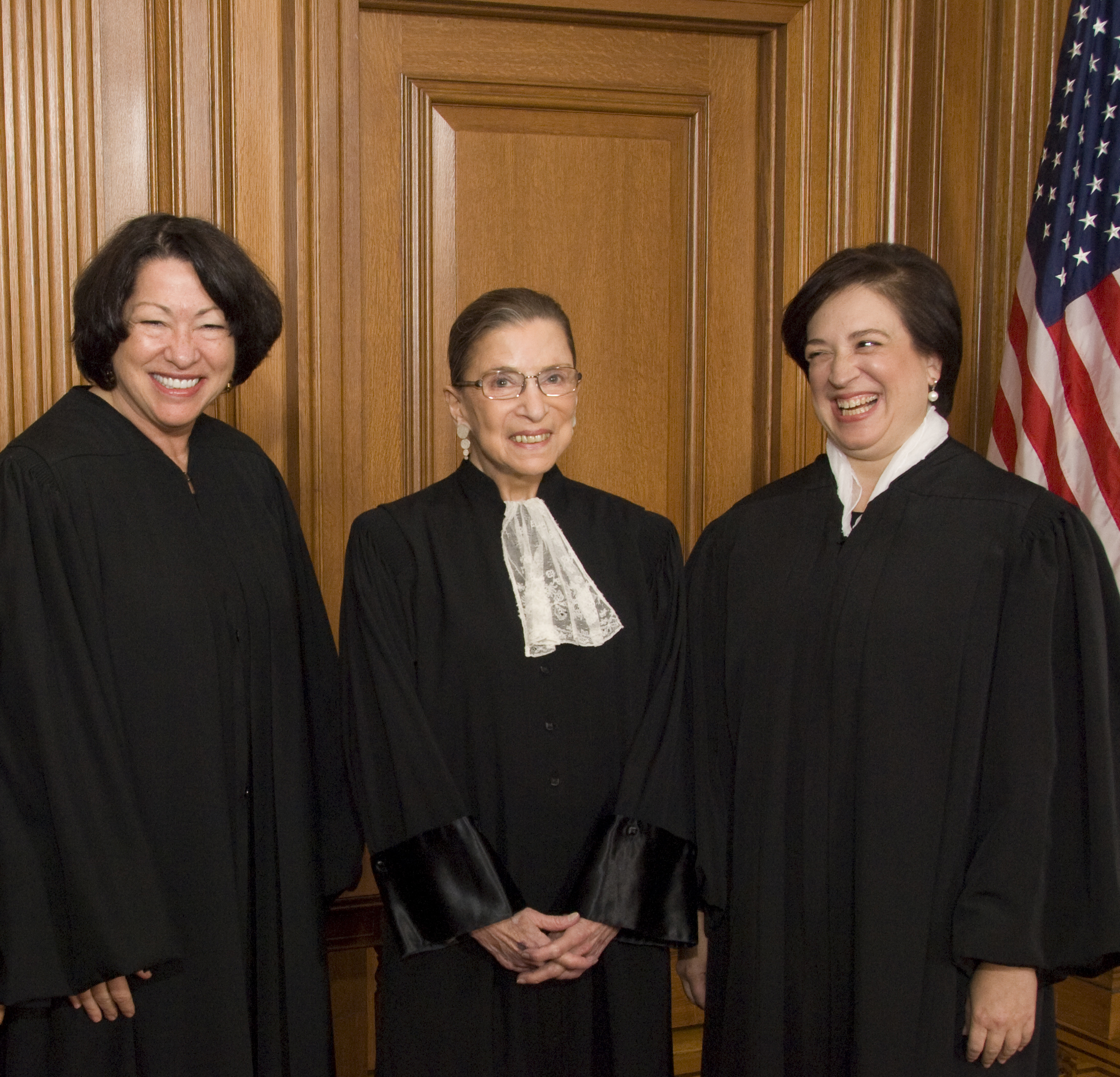Abortion rights, women of color, and LGBTQI+ people are under attack. Pledge to join us in fighting for gender justice.
Three Times the Female SCOTUS Justices Were Superwomen of Justice

In honor of the recent Whole Woman’s Health v. Hellerstedt decision, I’d like to take a few minutes to reflect on what total bosses the current sitting female Supreme Court Justices truly are. While there are many moments that exemplify what truly powerful and extraordinary people these three are, the Whole Woman’s Health oral argument is an exceptional example of their legal prowess.
As a refresher, the Whole Woman’s Health case deals with a series of Texas laws that have resulted in the closure of half of the abortion clinics in the state. While Texas argues that these restrictions are to ensure the health and safety of women, it reality, these are unnecessary, burdensome requirements that have resulted in women traveling hundreds of miles to receive medical care. While we may hear a lot about abortion in the news, the Supreme Court rarely hears cases like this. In fact, this case is the most significant abortion case since Planned Parenthood of Southern Pennsylvania vs. Casey in 1992. Since the Whole Woman’s Health decision that ruled these laws unconstitutional came down from the high court this past Monday, it seems appropriate to reminisce about the awesomeness that Justices Ginsberg, Sotomayor, and Kagan displayed while fighting to protect the right to bodily autonomy.
At the time of the arguments, I was interning at the Court and was fortunate enough to attend the arguments. While there were many instances from that day that would fit this post, these three are the ones that stand out to me. If, however, you are interested in a more detailed analysis of the oral arguments, check out Dahlia Lithwick’s highlights.
1. Justice Sotomayor Throws Tradition Out the Window:
While the Chief Justice, may be “the first among equals,” his word is final when it comes to the length and organization of oral arguments. That said, on the morning of the Whole Woman’s Health argument, Justice Sotomayor completely ignored Chief Justice Robert’s attempts to wrap up Stephanie Toti’s (counsel for Whole Woman’s Health) arguments at the end of her designated 30 minutes. Instead of letting the Chief signal to Ms. Toti by uttering the usual phrase, “Thank you, counsel” Justice Sotomayor continued into another question, which added eight extra minutes to Ms. Toti’s time. While eight minutes may not sound like a lot, in the world of SCOTUS oral arguments, it’s an eternity. During the argument, I was sitting with the justices’ law clerks; the look of shock and horror on their faces as Justice Sotomayor proceeded to overrule the authority of the Chief Justice in such a public way showed just how unprecedented this action truly was.

2. Notorious RBG’s First Question to Texas:
Justice Ginsberg started the questioning of the Solicitor General of Texas, Scott Keller, by asking him how many women live over 100 miles from the nearest clinic. He promptly responded by noting that 25% are outside 100 mile radius of a clinic. He then mentioned a New Mexico facility that is near the New Mexico-Texas border, to which RBG, being the quick witted personality that she is, did not hesitate to point out Texas’ hypocrisy by sending women to this clinic, since New Mexico does not have the same set of surgical regulations that are meant to ensure patients’ safety, at least according to Texas.

3. Justice Kagan Says What We’re All Thinking:
Towards the end of Mr. Keller’s time, Justice Kagan asked a question so basic, yet so poignant, that the whole room seemed to stop: why did Texas even pass these laws in the first place? She notes that there are many other procedures that carry higher risks than abortions- colonoscopies, liposuction, child birth, etc. Why did Texas fail to set higher medical standards for those procedures too? Abortions are already very safe procedures and Texas had regulations in place to ensure that fact prior to the laws in question here were passed, so why did Texas choose to make much higher medical standards for abortions and not other, less safe, out-patient procedures? The elementary nature of the question left Mr. Keller floundering for a few moments before he launched into a speech about how policy naturally mirrors public interest. Regardless of whether you think his answer had merit to it, it was clear he was unprepared for a question of this nature.

These instances of Justices Ginsberg, Sotomayor, and Kagan all being total bosses and standing up for a woman’s right to choose solidifies the fact that the feminist movement is lucky to have these three guardian angels of justice on our side.






